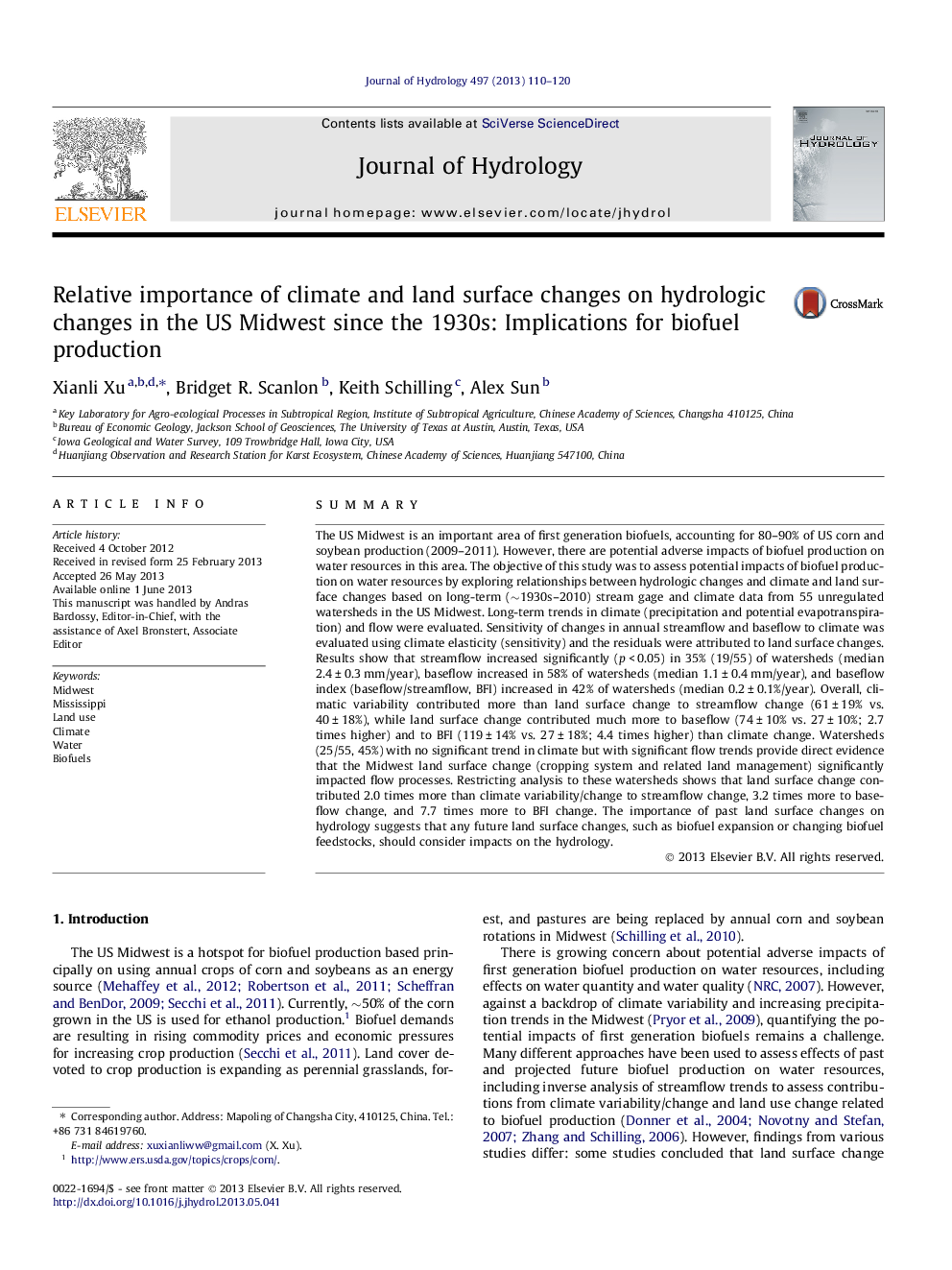| کد مقاله | کد نشریه | سال انتشار | مقاله انگلیسی | نسخه تمام متن |
|---|---|---|---|---|
| 4576240 | 1629951 | 2013 | 11 صفحه PDF | دانلود رایگان |

• Streamflow increased significantly in 35% (19/55) of watersheds in Midwest US since 1930s.
• Baseflow significantly increased in 58% of watersheds and BFI increased in 42% of watersheds.
• Forty-five percent of watersheds show no significant climate trend but a significant flow trend.
• Climate change contributions are higher to streamflow change than land surface change contributions.
• Land surface changes contributed much more to baseflow and BFI than climate change.
SummaryThe US Midwest is an important area of first generation biofuels, accounting for 80–90% of US corn and soybean production (2009–2011). However, there are potential adverse impacts of biofuel production on water resources in this area. The objective of this study was to assess potential impacts of biofuel production on water resources by exploring relationships between hydrologic changes and climate and land surface changes based on long-term (∼1930s–2010) stream gage and climate data from 55 unregulated watersheds in the US Midwest. Long-term trends in climate (precipitation and potential evapotranspiration) and flow were evaluated. Sensitivity of changes in annual streamflow and baseflow to climate was evaluated using climate elasticity (sensitivity) and the residuals were attributed to land surface changes. Results show that streamflow increased significantly (p < 0.05) in 35% (19/55) of watersheds (median 2.4 ± 0.3 mm/year), baseflow increased in 58% of watersheds (median 1.1 ± 0.4 mm/year), and baseflow index (baseflow/streamflow, BFI) increased in 42% of watersheds (median 0.2 ± 0.1%/year). Overall, climatic variability contributed more than land surface change to streamflow change (61 ± 19% vs. 40 ± 18%), while land surface change contributed much more to baseflow (74 ± 10% vs. 27 ± 10%; 2.7 times higher) and to BFI (119 ± 14% vs. 27 ± 18%; 4.4 times higher) than climate change. Watersheds (25/55, 45%) with no significant trend in climate but with significant flow trends provide direct evidence that the Midwest land surface change (cropping system and related land management) significantly impacted flow processes. Restricting analysis to these watersheds shows that land surface change contributed 2.0 times more than climate variability/change to streamflow change, 3.2 times more to baseflow change, and 7.7 times more to BFI change. The importance of past land surface changes on hydrology suggests that any future land surface changes, such as biofuel expansion or changing biofuel feedstocks, should consider impacts on the hydrology.
Journal: Journal of Hydrology - Volume 497, 8 August 2013, Pages 110–120